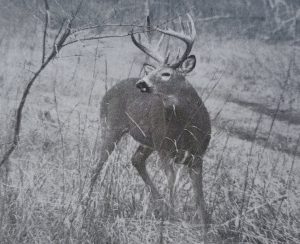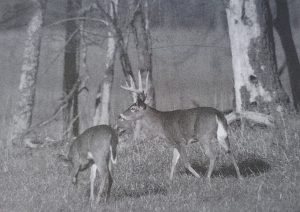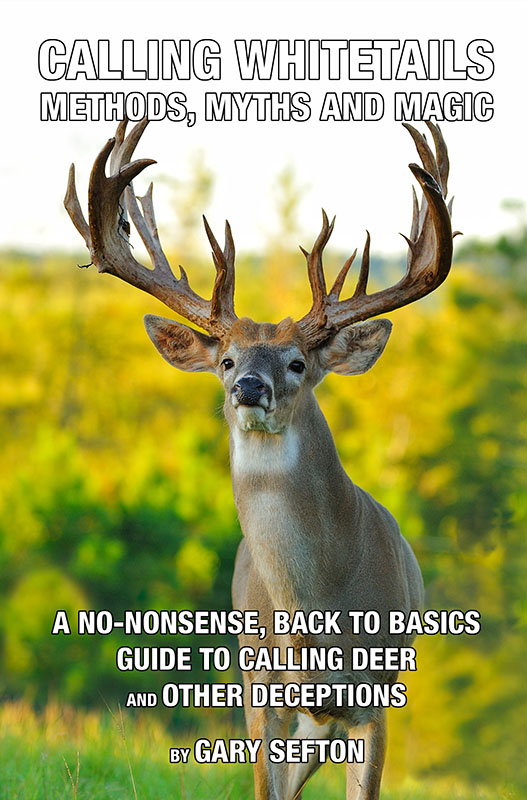What’s that?” the old man said as he pointed to the deer call hanging around my neck. “It’s a deer call” I said. “You mean them deer talk?” he asked.
Calling Whitetails: Methods, Myths and Magic
A No-Nonsense, Back-to-Basics Guide to Calling Deer
by Gary Sefton

The first one is the Magic One!
“What’s that?” the old man said as he pointed to the deer call hanging around my neck.
“It’s a deer call” I said.
“You mean them deer talk?” he asked.
I blew a few notes on the call and said “They don’t carry on conversations but they do have a limited vocabulary of distinctive sounds that have specific meanings. They use those sounds to communicate with each other so it’s kind of like talking”.
He scratched his head, looked me in the eye, and said “I’ve been deer hunting for 30 years. I ain’t never heard a deer say nothing!”
This conversation took place more than 20 years ago in Madison, Wisconsin, at one of the early “Deer Classics” where I was scheduled to give seminars on deer calling. This “don’t make a sound in the deer woods” mindset was fairly typical back then, especially among old-time deer hunters but the age of information was gaining ground and deer hunters were beginning to take full advantage of any and every new deer-related concept. Deer hunting was fast becoming big business and the market for deer hunting accessories was growing in leaps and bounds, especially those that promised “Big Bucks” with little or no effort.
“Blow the call and get your gun up!” was the sales pitch many call manufacturers used to promote their products; deer hunters, looking for a “magic bullet”, couldn’t resist. Amazingly enough, without knowing what to say or what they were saying, hunters were having enough success with the calls to keep the momentum going. Deer calls became more popular and the competition among call manufacturers was fierce. The market was driven by “what’s new this year” even though deer were still making the same sounds they’d been making for hundreds of thousands of years.
Call manufacturers had to keep up with the market demands so, as years went by, new and unique apparatuses and vocalizations were showing up every season with testimonials, magazine articles, and the magic of video to validate their claims. Here again, hunters were successful enough, even with bizarre calls with claims like “The Viagra of Deer Calls”, to continue the marketing mania.
But deer calling tactics have finally come full circle. A bunch of “revolutionary” new calling concepts has fallen by the way and deer are still communicating in their normal voices. What was effective twenty years ago still works just as well today.
I’ve been in on and part of the deer calling revolution since its infancy, working for game call companies since 1986 doing field testing and research on every aspect of deer calling, including interpreting and dissecting unusual and possibly significant vocalizations. My resume’ includes winning the ’93 and ’94 World Deer Calling Championships in Austin, Texas, and putting on well over a thousand deer calling seminars from Florida to Oregon and most points in between. There’s not much you can do or say to a deer that I haven’t tried for experiments’ sake and/or in hunting situations and there aren’t many reactions to calls I haven’t seen. I have called up hundreds of deer using basic techniques and I’ve probably run off as many deer as I’ve called up using “latest technology” techniques.
The “what’s new” frenzy has finally calmed down and we are finally getting back to basics.
The “basics” are what this book — Calling Whitetails; Methods, Myths, and Magic — is all about. We will concentrate on tactics based on biological facts and scientific observations, techniques that will work with the most consistency even though they may not have as much sex appeal as the “Nymphomaniacal Doe Bleat” or the “King Kong Buck Grunt”. There are no deer calls made by elves and nothing works every time.
Consistency is the best we can hope for and yes, “them deer talk!” Deer calls don’t make good deer hunters, but they can make good deer hunters better. With proper application, they can be valuable tools. They are here to stay, as well they should be. An accurate deer vocalization done at the right time, in the right place, can be the deciding factor in a successful deer hunt.

She has him right where he wants her!
CHAPTER I: Introduction to Calling; the Magic!
The reaction was immediate! The crash and dash of a large animal rattled through the woods in response to the sound I’d just made on a duck call look-a-like that was supposed to call deer. The reaction to the call was so sudden and so dramatic I couldn’t tell if it was coming to me or running away. I had taken the revolutionary new “deer call” to a likely spot and followed the instructions to the letter. I made the “burp/grunt” sound with no small amount of trepidation and suddenly he was up and running and blowing and snorting every step of the way.
But he wasn’t leaving. He was closing the ground. He had a head full of horns and a full head of steam and he was coming right at me! I was so flabbergasted by this amazing turn of events; I was totally incapacitated. A dream buck was standing broadside, not 15 yards away, looking right at me and I didn’t even raise my bow.
I just stood there looking into those blazing eyes that were plainly searching for the intruder who had the nerve to set foot in his domain. Our eyes locked for a split second, and then he wheeled and dashed out of my life forever.
He was long gone, but 25 years later his memory is still as fresh in my mind as if it happened yesterday. I can’t begin to count the number of deer I’ve called since that day but you never forget your first one…the “Magic” one.
After a lifetime of the “silence is golden in the deer woods!” mantra being drilled into my head, I made a guttural “burp” on a reed call and nearly got run over by a sure enough “shooter” buck. This “Grunt Call” as it was appropriately named, was not only a game-changer, it was a real “life changer” for me. I was hooked. Any time you can communicate with another species, using their language to manipulate them to your advantage, you have done something real special. I was used to doing it with turkeys and ducks but it never dawned on me to try to call a deer. What a thrill. I knew right then and there I would try to make that happen again, as often as possible.
 CALLING WHITETAILS: Methods, Myths and Magic
CALLING WHITETAILS: Methods, Myths and Magic
(Paperback, 5-1/2″ x 8-1/2″, 108 pages)
To order CALLING WHITETAILS, go to www.targetcommbooks.com
by Gary Sefton, world champion deer caller, seminar speaker, and consistently successful deer caller/hunter
Gary is an expert caller of turkeys and deer and has been so for a long time. He judged the NRA’s $50,000 “Great American Game Calling Challenge” twice.
Gary began working with game call companies in 1986, doing field testing and research on every aspect of deer calling, including interpreting and dissecting unusual and possibly significant vocalizations.
He says, “There’s not much you can do or say to a deer that I haven’t tried for experiments’ sake and/or in hunting situations, and there aren’t many reactions to calls that I haven’t seen.”
A competition caller as well as an active hunter, he won the 1993 and 1994 World Deer Calling Championship and has conducted far more than 1,000 deer calling seminars throughout the U.S.
He has written articles for Deer & Deer Hunting magazine and other regional and national outdoor publications. He has appeared on nationally syndicated radio and television outdoor shows and is featured on several DVDs.

